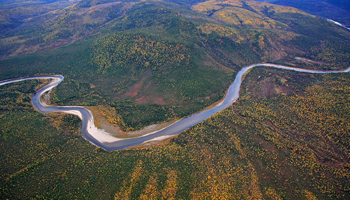 This
region is characterized by a unique combination of severe climatic conditions,
natural resources, extremely vulnerable environment, and a multi-ethnic
population. Geographically, Western Siberia is defined as the territory east of
the Ural Mountains up to the Yenisei River.
This
region is characterized by a unique combination of severe climatic conditions,
natural resources, extremely vulnerable environment, and a multi-ethnic
population. Geographically, Western Siberia is defined as the territory east of
the Ural Mountains up to the Yenisei River.
Broadly speaking, the majority of the landscape of Western Siberia is very flat, with large winding rivers that flow thousands of kilometers to Artic seas. You can travel for hours without seeing a hill. Large swamps occupy much of the plain area with the world's largest swamp, Vasyuganskoye, on the left bank of the Ob' River.
The southern part of Western Siberia has hilly but fairly good agricultural land used for farming with most of the regionís population (80%) living here. This is also where the famous Trans-Siberian railroad connects major cities of the region with the rest of Russia. The very tip of the southern part of Western Siberia, where Russian, Mongolian and Kazakhstan borders meet, is highlighted by the golden Altai Mountains, which provide the source of its greatest rivers - the Ob and the Irtysh. The Altai Mountains represent the most complete sequence of altitudinal vegetation zones in central Siberia: steppe, forest-steppe, mixed forest, sub-alpine and alpine vegetation.
www.sras.org